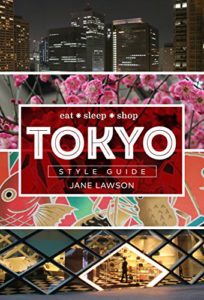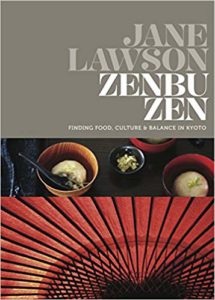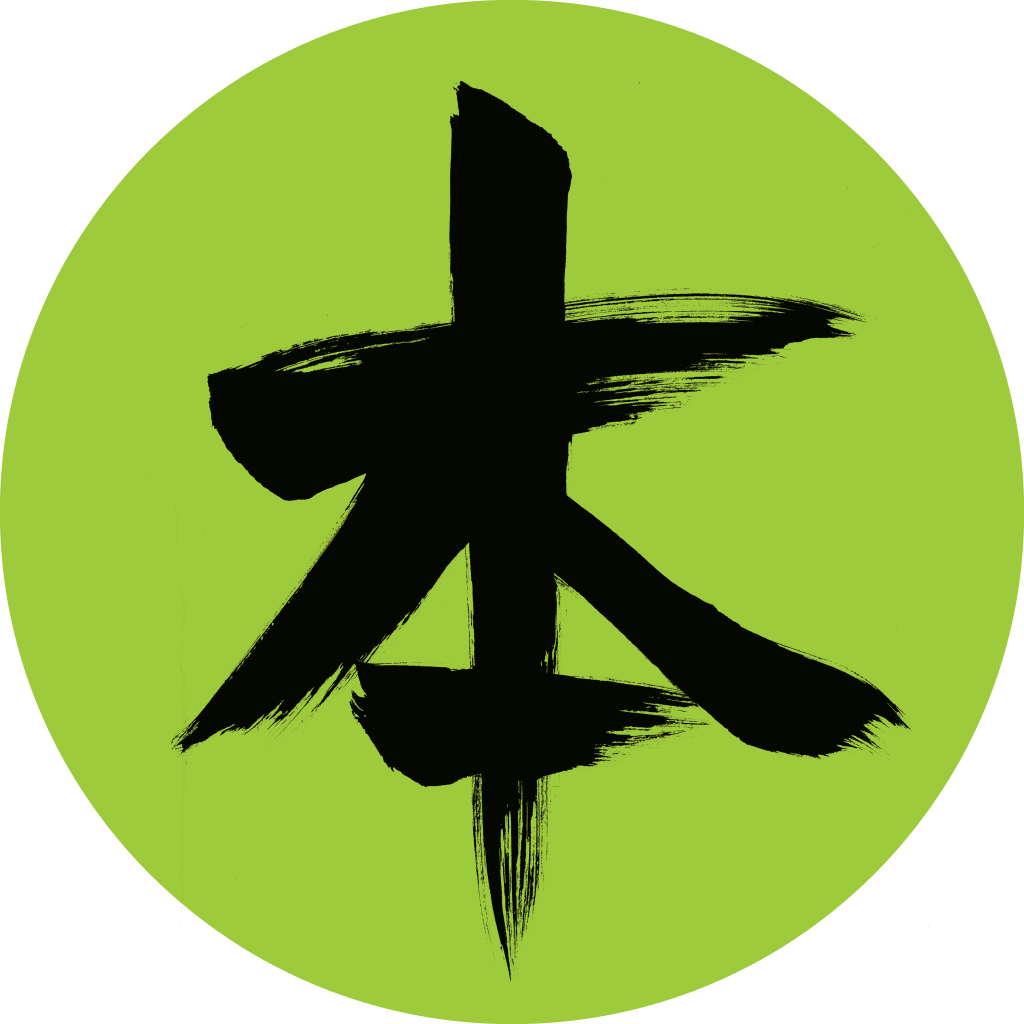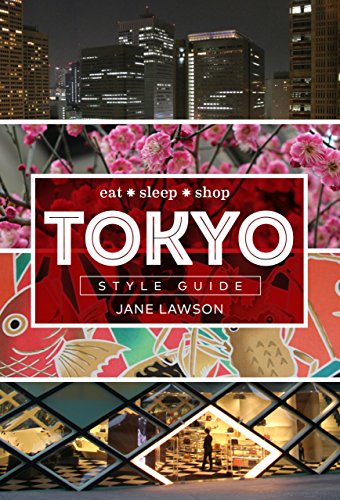
One of the most exhilarating and inspiring cities in the world, Tokyo is vast, complex and ever-changing, pulsating with youthful energy. Author Jane Lawson has been travelling to Japan for more than thirty years, and has led many group and private tours to various parts of the country. In Tokyo Style Guide she offers a unique insight into Japan’s culture and aesthetic with her expert guided walks through 21 of the most intriguing and stylish Tokyo neighbourhoods and the best of what they have to offer.
Jane shares information on how to get the most from your trip-what to see and how best to experience it. Tokyo Style Guide is packed with places where you can shop, relax, be inspired, eat and sleep, as well as practical tips to help you prepare for your trip, navigate the city with confidence and make the most of your visit.
An exclusive Books on Asia interview with Jane Lawson
Before we start our interview with Jane, I want to give a little background on my first encounter with her Tokyo Style Guide: Eat, Sleep, Shop. I was traveling in Australia with my husband and we stopped in one of those typical little Aussie towns and wandered into the local bookstore (as you do). It was a tiny store crowded with people. I always go to the Travel shelf first, to see what they have on Japan and there were scant few books (like, three!). One was Tokyo Style Guide.
The first thing that struck me was how beautifully bound the book is. The cover is embossed, and reminds me of Japanese washi paper. The photo art was very appealing. Upon opening the book, I was taken by the quality of the paper, which while thick, didn’t contribute to the weight of the 319-page guide, designed to be light and compact enough to carry in a handbag. My first thought was: A lot of thought and love that went into making this book!
Books on Asia: Once I opened the book and started reading, I was entranced by the writing. I even called my husband over from the other side of the bookstore and said, “Take a look at this!” Being a bit of a stickler for Japanese manners myself, it was rewarding to see your first paragraph on what to wear:
“You’ll quickly notice that the Japanese are rather snappy dressers and, even at their most relaxed, almost always immaculately groomed. So, when you plan your travel wardrobe, bear that in mind in order to feel less self-conscious.”
This paragraph alone showed me how well you know Japan. And that you take some responsibility being a tourist here. You’re telling your reader right away that we’re stepping into a special place, so please take note!
Jane Lawson: I’ve been living in or travelling around Japan for 35 years and, as you know, the more you know about this fascinating country – the less you know… its layers are deep. Sometimes it’s hard to pull out the basics and pare them back for sharing with first-timers but I felt there was core information required for visitors in accessing the best of Tokyo – and a big part of that is respecting cultural nuances.
BOA: How much of a part of this creative process were you? Did you have any input on the design or cover? Or is Tokyo Style Guide part of a series of such guidebooks of cities around the world?
Jane: The book is part of a ‘loose’ series but they all have their own personalities. For Tokyo I wanted to break away a little from earlier titles because what translates well for one city doesn’t necessarily work for the next and I felt Tokyo needed to be really user friendly, as a city this busy can be overwhelming. So I broke it into chapters around areas I like to focus on and designed them as structured but flexible walks. I shot the book while I was researching and plotting out the routes so they are a visual aid as well as an embellishment to the text. I worked closely with the designer to ensure the images gave readers a true ‘feeling’ for each area. The maps look simple but we worked painstakingly on them to make sure they were easy to understand.
BOA: Let’s talk about your “Suggested Walks,” which I really loved. The maps are charmingly simple and easy to understand and you offer a bit of nature and Japanese culture along the way; places for people to take a time-out after ducking in and out of myriad shops all day. You even recommended a cemetery! I love that.
Jane: I designed the walks so readers could get the most out of each area in a balanced way—spending time in a garden or visiting a gorgeous temple, admiring traditional buildings, viewing spectacular art in locations as they naturally fall along each walking route which includes fabulous shopping and excellent coffee, bar and dining options. If you’re in the middle of a walk and you don’t know where to find a toilet or stop for caffeine or a bite to eat it can ruin the flow and send you on a wild goose chase. I’ve included all the sorts of things I would if I was actually guiding the reader around for the day.
BOA: So, how did you discover Japan?
Jane: I became quickly fascinated during Japanese language and culture classes at high school and at age 15 I visited Japan for the first time with my family. I was completely smitten. Tokyo was mind-blowing even back then! After high school I started working for a Japan Airlines travel subsidiary in Sydney—Jalpak—with mainly Japanese co-workers and excellent staff travel discounts which fed my obsession!
BOA: At some point in your book, you come right out and say that this guide is not for otaku, like gamers, cosplayers and maid cafe dwellers. And I noticed there was only a little bit of kawaii, hardly any Hello Kitty.
Jane: I certainly don’t’ want to alienate anyone but the series is aimed at those who fancy their travel or holidays with a good dose of style, design, beautiful scenery, culture, comfort, great food, coffee, shopping and insider secrets.
BOA: Let’s just do a sampling here of these ‘insider secrets.’ A little quiz, if you like. Ready?
What part of Tokyo would you go to buy wax food models?
Jane: Kappabashi, aka ‘kitchen town,’ very close to Sensōji (or Asakusa Kannon Temple)! It’s great to explore both of them while you are in the Asakusa area.
How about vintage children’s books?
Jane: There’s a gorgeous little place in Koenji called Ehonya Rusubanbansuru Kaisha – it’s a mouthful but worth seeking out for beautifully illustrated pages with a bit of history.
How about Japanese cooking knives?
Jane: Kappabashi (has several knife specialty stores) but you can also purchase them at Japanese department stores and there’s a good shop in Tokyo Midtown that beautifully displays all kinds of stunning cutting implements for the home.
What if one should have a hankering for natural Japanese cosmetics made with green tea, konyaku starch, and yuzu?
Jane: Oh, in gorgeous Kagurazaka—the atmospheric sloping streets and cobbled laneways of this area, not far from Shinjuku, make this one of my favourite places to wander alone in Tokyo. This previous samurai entertainment quarter still boasts a couple of geisha houses and plenty of traditional stores. Makanai Kosume (cosmetics) is one of them.
BOA: You also recommend some dining precincts tourists rarely get to see, and certain department store gourmet basement dining where one can get the real deal to take back and eat in the hotel room. You really thought of everything!
Jane: Food is an important part of travel experiences as it can offer you great insight into the culture. Sure I recommend a few flash restaurants for those wanting to have a special night out, but it’s the local joints specialising in a specific dish or styles of Japanese food, where the locals eat, that can bring unexpected joy – and a way to make friends! I really wanted to make sure I included a wide range of eateries so that folks could try a bit of everything along the way and feel like they’d truly tasted Tokyo. It’s probably not obvious to readers but a lot of thought went into what landed on the pages food and drink wise. Of course some nights you just need a break from being out and about. Fortunately, Tokyo’s department store food halls or depachika are out of this world!
The choice of fresh, flavoursome and often healthy dishes is stunning and of course there’s amazingly decadent desserts, chocolate and even ice creams which are secured and surrounded with dry ice packages so they’re still in pristine condition when you get ‘home’.
BOA: When you were talking about one of the museums of Japanese arts and crafts, where to find second hand kimonos, natural dyed fabrics and even festival wear, I couldn’t help but think of Kyoto. I had no idea you could find all that in Tokyo. That said, we hope you’ll be putting out a Kyoto Style Guide!
I so appreciate your support and am keeping my fingers there will be a Kyoto Style Guide (or similar) one day!
BOA: Can you tell me about the tours you run?
Jane: Zenbu Tours are high-end: we stay in wonderful accommodations, eat amazing food and work hard behind the scenes to ensure each tour is unique, fun, fascinating and delicious! There’s a real focus on the Japanese aesthetic: design, architecture, art, beautiful spaces, places and presentation. We spend time with local experts in everything from ceramics to textiles, from tea ceremony to markets, and zen meditation to cuisine like shojin ryori and kaiseki. Of course people will just have to come along to find out exactly what they are!
I really hope Books on Asia readers enjoy Tokyo Style Guide—and tell them not to be shy—I love getting little reports from people who are in situ. Tokyo is a place you could keep exploring until the end of days; this book is really just a start and I hope it provides encouragement for folks to keep returning!
About the Author

After many years working as a chef in Sydney, Jane Lawson moved into publishing, combining her love of travel, cooking and books. She is the author of Snowflakes and Schnapps, Spice Market, Grub, Yoshoku, A Little Taste of Japan, Cocina Nueva, Zenbu Zen and 2016’s Milkbar Memories. She is also the co-author of BBQ Food for Friends, which won a Gourmand World Cookbook Award in 2003. Jane has been traveling around Japan for over thirty years. She runs independent tours to Japan on a regular basis, guiding her clients to the best that the country has to offer, from culture to fashion, food and lifestyle. Her particular area of interest is Japanese cuisine. Visit zenbutours.com for more information..


